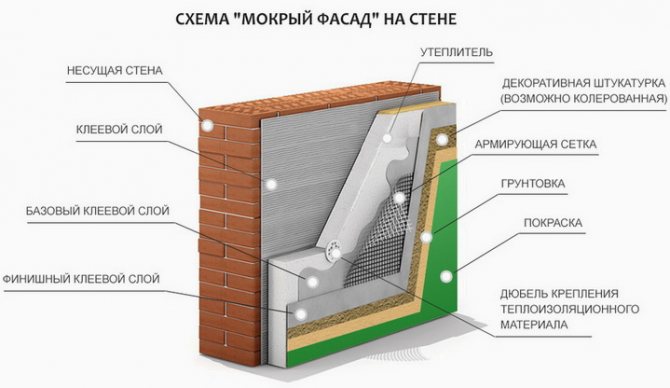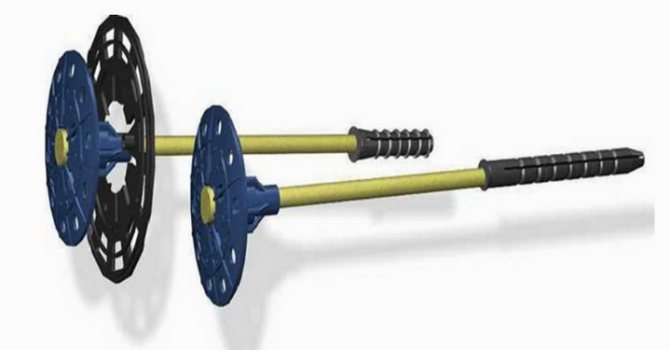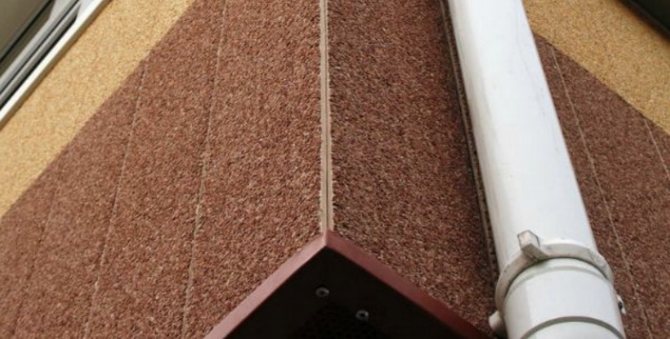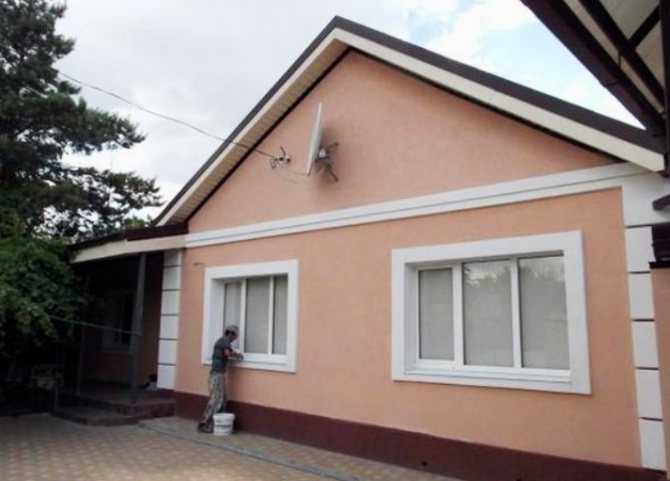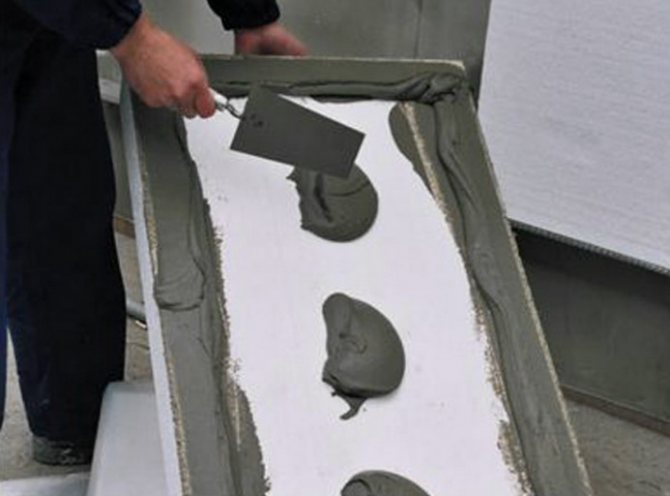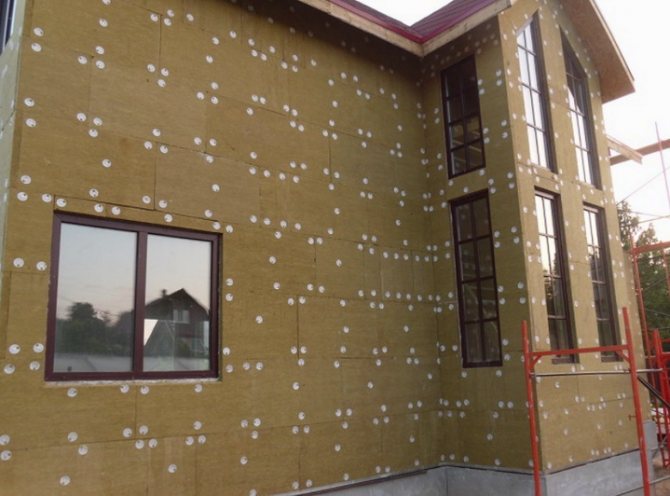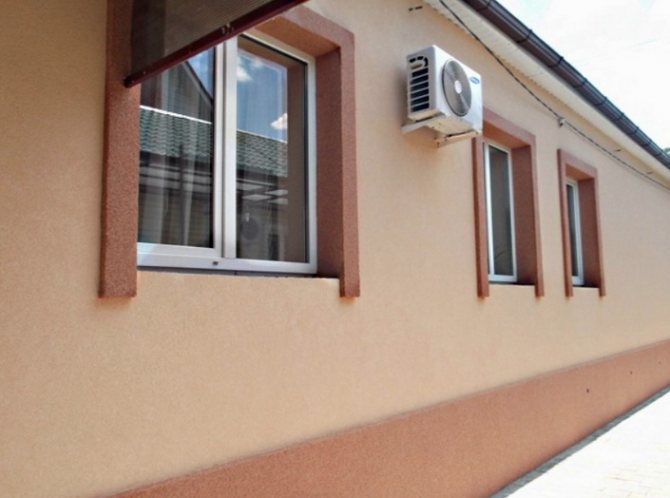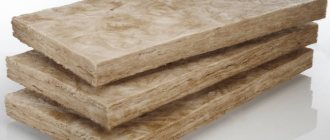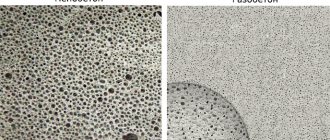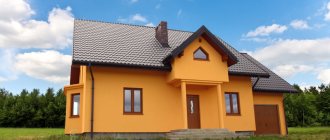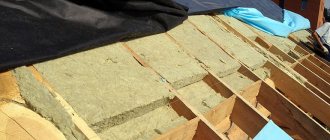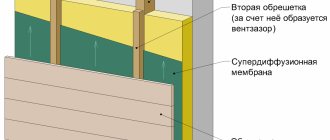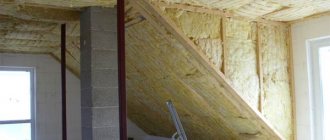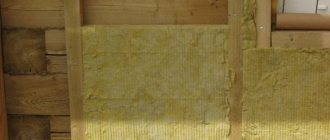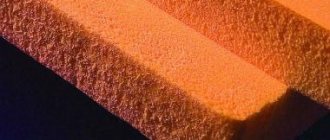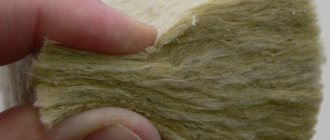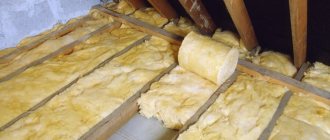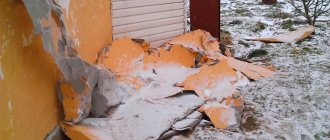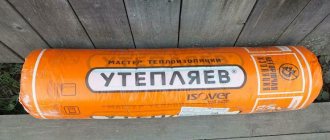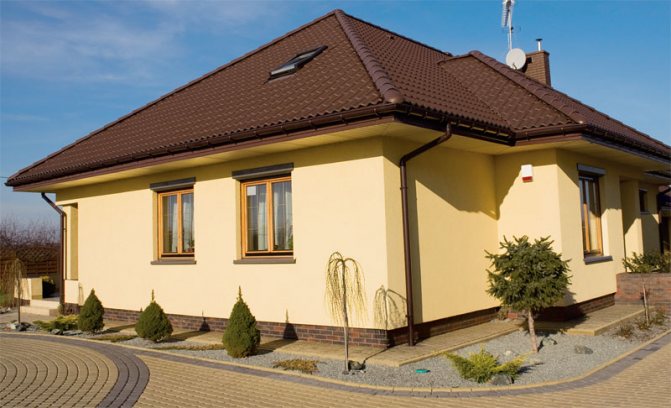
Wet insulation of facades using external thermal insulation, on top of which facing materials are applied in the form of liquid mixtures, is the most common way to improve the thermal performance of a house. And like any popular technology, wet facade insulation is often performed with many obvious or not so obvious mistakes. Let's describe the most common ones.
Errors in wet insulation of facades and poor attention to problem areas on the outer walls of buildings can nullify the dignity of the bonded thermal insulation system. Therefore, having decided to insulate the external walls with a wet method, you need to try to avoid mistakes in the choice of components, as well as avoid errors in the installation of thermal insulation and other structural details.
Wrong choice of insulation thickness
The thickness of the insulation for wet insulation of facades should be determined by the heat engineering calculation. It is important that the heat transfer resistance (R coefficient) of the outer wall is not lower than the current standards. The minimum values for 1 temperature zone of Ukraine R = 3.3 m2K / W, for zone 2 - R = 2.8 m2K / W.
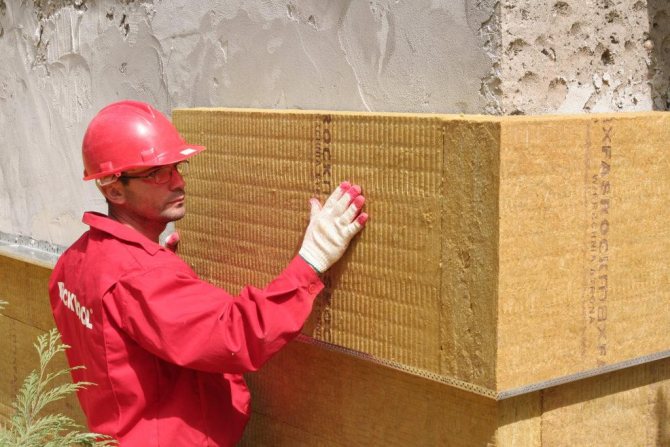

On average, depending on the type and thickness of the wall material, the thickness of the insulation for external wall insulation is 10-15 cm, and sometimes 20 cm. Such a thickness of the insulation provides a displacement of the "dew point" (the section of the structure, the temperature of which is equal to the temperature of condensation of water vapor ) from the wall to the thermal insulation layer. As a result, the wall will be reliably protected from moisture and frost penetration. The use of a layer of thermal insulation of insufficient thickness will not provide effective thermal protection and will increase the cost of heating the house. In addition, this will negatively affect the structural performance of the wall over time.
And yet you need to understand that an unnecessarily thick layer of thermal insulation (above 20 cm) can worsen the appearance of the house. With such a layer of insulation, the windows will be recessed into the facade, and less light will get into them.
The choice of materials without taking into account the requirements of vapor permeability
For wet thermal insulation of facades, one of two popular heaters is usually used - foam or mineral wool. At the same time, the foam almost does not allow air and water vapor to pass through, while mineral wool, on the contrary, allows them to pass freely.
The vapor permeability of the layers of the facade insulation system should increase from the inside out, and the facade with mineral wool is equipped so that it is possible to drain condensate from the insulation. If the free circulation of steam through the mineral wool is not guaranteed, the insulation will be filled with moisture and lose its heat-shielding properties, and the wall will begin to freeze and mold and mildew will form on it.
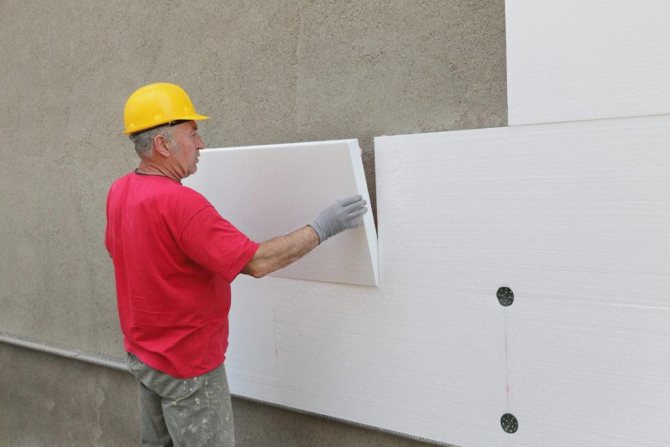

First of all, this concerns the choice of finishing paints and plasters. In systems based on foam, you can choose almost any type of exterior finish, but when using mineral wool, only vapor-permeable silicate, silicone and mineral plasters are used, but acrylic mixtures, which become a vapor barrier, are not used.
In addition, it is better not to insulate wall materials with high vapor permeability (ceramic bricks, ceramic blocks and aerated concrete) with polystyrene foam at all, leaving it to insulate silicate bricks, concrete and foundation structures.
What kind of cotton wool should be for a wet facade?
Mineral wool is one of the most common materials for thermal insulation. Often this product is used in “wet facade” insulation systems. Therefore, special requirements are imposed on the characteristics of such material:
Density
This indicator provides the material with geometric resistance, compressive strength, and ease of use. The method of selecting insulation specifically for your facade system also depends on the characteristics. There is a huge density range for rock wool from 30 to 165 kg per cubic meter.
For example, an indicator in the region of 45 - 100 kg per cubic meter makes it possible to use mineral wool in work with a ventilated facade, that is, a device on siding.
This type of product is simply mounted directly by the elements of the facade, sometimes special dowels are used. The main differences are the ability to return to the geometric shape, durability over long-term use.
Density over 100 kg per cubic meter makes mineral wool available for finishing decorative plaster. To fix such a product, you will need to use an adhesive solution, dowels, as in the previous case.
Usually they use such mineral wool, which will not cause difficulties when installing an insulation system. Such products have a density in the range of 30 to 45 kg per cubic meter. However, in this case, the whole process is carried out from the inside. Clapboard or drywall will be used as decoration.
Vapor permeability
Unlike cheap polystyrene, mineral wool is what you need. It has the necessary vapor permeability, which ensures effective air circulation and maintains the correct microclimate in the room.
Minvata has an SST of over 0.25 mg, making it an irreplaceable insulation, even taking into account its higher cost. Also, mineral wool does not accumulate condensation and practically does not absorb moisture, which allows it to maintain its primary geometric shape in any operating conditions.
Durability and non-flammability
For mineral wool, it is over 25 years old. This makes it much more effective than its counterpart - expanded polystyrene, the durability of which depends on the quality of the material. Mineral wool is non-combustible in combination with enhanced heat-insulating properties and sound insulation. Also, mineral wool is absolutely resistant to changes in the primary geometric shape, has environmental safety, resistance to the effects of chemical and biological substances.
Material strength
Mineral wool is produced taking into account the increase in compressive strength. Thus, the material is made with a higher amount of vertical fibers. This increases the strength of the coating and provides a higher functional performance.
Low gyroscopicity
Mineral wool has an extremely low moisture content in the material - approximately 0.5% of the volume, even with prolonged use. For an even lower absorption of moisture, mineral wool is treated with special substances that repel moisture.
Chemical resistance
This material is extremely resistant to the formation of various chemical processes. Mineral wool fibers have a passive chemical environment that does not provoke corrosive effects.
Thanks to this characteristic, mineral wool retains its properties even with intensive use for decades. Because of this, it is most often used to insulate objects using the "wet facade" technique.
Savings on glue and other components
A set of components for wet insulation of facades can be purchased as a set or formed independently. Any set includes an adhesive mixture for fixing insulation, insulation and dowels for fixing insulation, reinforcing mesh, building mixture for reinforcing insulation and plaster.
Choosing the components on their own, some craftsmen believe that the insulation does not have to be glued to the wall, but it is enough to attach it with dowels. In other cases, it is suggested to replace the adhesive mixture for the insulation with a cheap solution (for example, tile adhesive) or simply save on the application of glue.
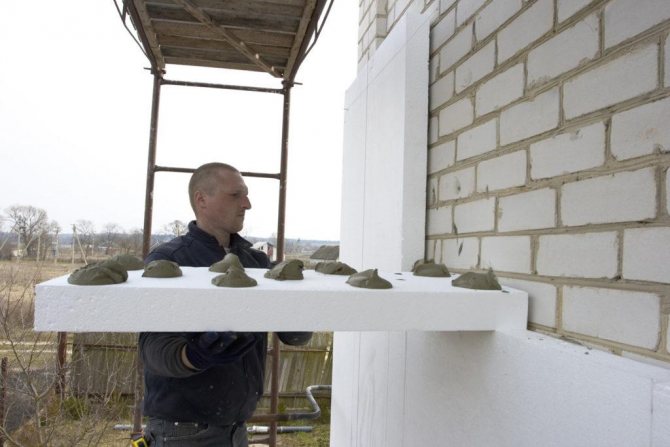

But a wall insulated in this way is likely to begin to collapse. Cracking of the plaster, peeling and tearing of thermal insulation, etc. will occur. External insulation of facades is performed for a long time, and it is better to give up saving, not to reduce the amount of glue and not to dilute it with sand.
Another problem is the wrong choice of dowels for facade systems, which must withstand the corresponding loads, changes in humidity and temperature, the influence of the external environment, etc. The choice of fasteners should be determined by the wall material, the type and thickness of the insulation. At the same time, not only the quality of the dowels, but also their quantity are important for fixing the thermal insulation.
Material advantages
It is not for nothing that the insulation of facades with mineral wool has become so popular, because this material has the following advantages:
- mineral wool is one of the best types of insulation in most sandwich panels;
- it is an environmentally friendly material;
- safe non-combustible insulation;
- has high protective qualities and the ability to "breathe";
- does not decay, does not corrode and is not capable of entering into chemical reactions;
- does not allow moisture to pass through;
- has an affordable price.
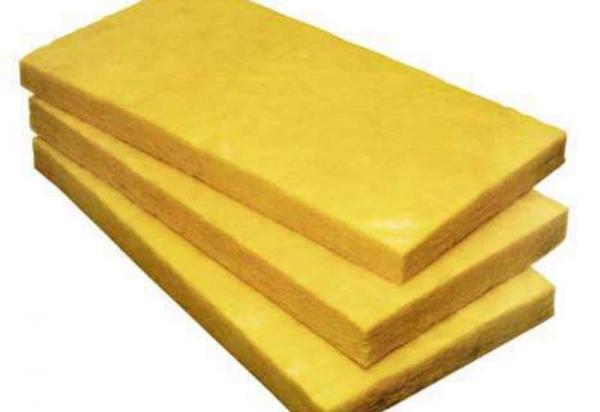

But in addition to good qualities, mineral wool also has a number of disadvantages that should be considered before installing such a heater:
- rather heavy weight;
- small particles of material can crumble and cause itching of the human skin;
- prolonged exposure to moisture can deteriorate the thermal insulation properties of the cotton wool.
Incorrect installation of insulation
When installing a wet facade insulation system, you should try to avoid the most common mistakes in fixing elements. These include, first of all, a loose joint of insulation plates, as well as filling the joints with glue. And in fact, and in another case, this leads to the formation of cold bridges and cracks in the finish coating. Therefore, when installing thermal insulation boards, gaps of more than 2 mm must be filled with strips of thermal insulation material.
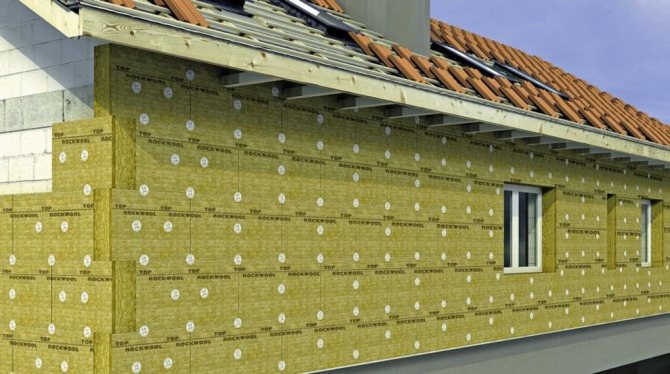

It is very important to make a monolithic thermal insulation loop around the entire house. Close attention is paid to the most difficult places - corners, niches, ledges, openings. Here you need to perform elastic abutment of the elements to the wall and protect it from moisture penetration.
When installing the insulation, it is important to place the dowel caps flush with the outer surface of the thermal insulation layer. Otherwise, bumps or grooves will appear on the finishing plaster, which will also worsen the design characteristics of the system.
Incorrect insulation reinforcement
One of the mistakes of wet insulation of facades is the laying of a reinforcing mesh directly on the insulation, and not in a layer of glue. This installation usually leads to delamination of the reinforcing layer.
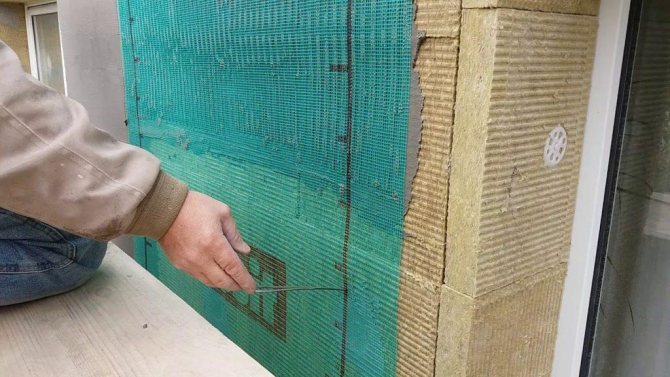

The mesh should be embedded in the adhesive layer, providing an overlap of at least 100 mm in all directions, after which a second layer of waterproof reinforcing composition is applied over the mesh.
In addition, the mesh itself must be alkali-resistant (cement-based mortar has an alkaline reaction), have a density of 160 g / m2 and a mesh of 3 × 3 mm or 5 × 5 mm.
Mineral slabs production
Mineral wool slabs EURO-LIGHT (insulation LIGHT)
Heat insulating mineral wool slabs EURO-LITE (insulation Light) are used as additional fire protection for light building structures - roofs (roofs) and internal partitions. The mineral slab can be produced both with a lining on both sides with foil or fiberglass, or without lining material.
Basalt wool can withstand temperatures up to 1000 ° C, which allows the thermal insulation mineral slab to withstand significant heat loads and effectively prevent the spread of fire.
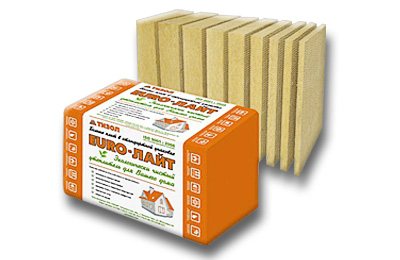

To learn more
Mineral wool slabs EURO-BLOCK
Mineral wool thermal insulation boards EURO-BLOCK are produced from basalt wool. Lightweight, non-flammable, hydrophobic, heat and sound insulation boards made of rock-based mineral wool.
Plates are produced without lining material, or at the request of the customer in lining with fiberglass mesh, fiberglass or foil.
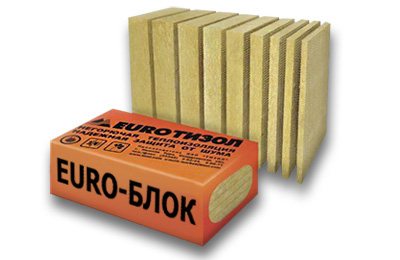

To learn more
Mineral wool slabs EURO-VENT, EURO-VENT B and EURO-VENT N
Mineral wool slabs EURO-VENT, EURO-VENT B and EURO-VENT N... Non-combustible, hydrophobic, heat and sound insulation boards made of rock-based mineral wool.
Plates are produced without lining material, or at the request of the customer in lining with fiberglass mesh, fiberglass or foil.
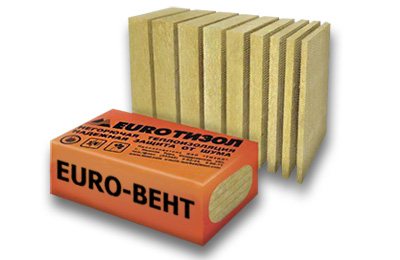

To learn more
Mineral wool slabs EURO-FASAD
Rigid, non-combustible, hydrophobic, heat and sound insulation boards made of rock-based mineral wool. Plates are produced without lining material, or at the request of the customer in lining with fiberglass mesh, fiberglass or foil.
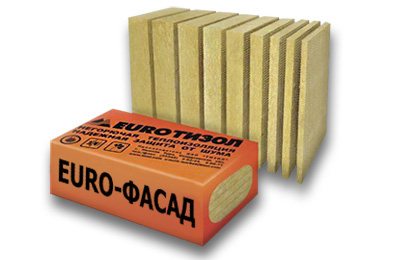

To learn more
Mineral wool slabs EURO-RUF, EURO-RUF B, EURO-RUF B Super and EURO-RUF N
Mineral wool slabs EURO-RUF, EURO-RUF B, EURO-RUF B Super and EURO-RUF... Rigid, non-combustible, hydrophobic, heat and sound insulation boards made of rock-based mineral wool.
Plates are produced without lining material, or at the request of the customer in lining with fiberglass mesh, fiberglass or foil.
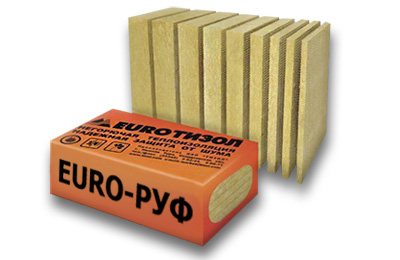

To learn more
Mineral wool slabs EURO-LIT
Mineral wool slabs EURO-LIT.... Fire-retardant thermal insulation boards made of rock-based mineral wool.
Plates are produced without covering material or can be laminated on one side with aluminum foil, reinforced with foil, fiberglass, fiberglass mesh, fiberglass.
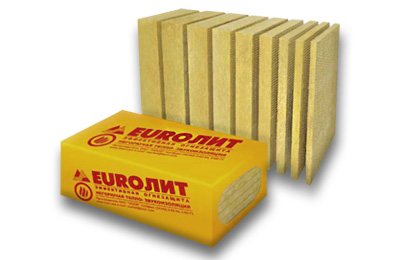

To learn more
Mineral wool slabs EURO-SANDWICH S
Mineral wool slabs EURO-SANDWICH S and EURO-SANDWICH K. Non-combustible hydrophobized heat and sound insulating mineral wool slabs based on rocks.
Fire-retardant thermal insulation boards made of rock-based mineral wool.
Plates are produced without covering material or can be laminated on one side with aluminum foil, reinforced with foil, fiberglass, fiberglass mesh, fiberglass.
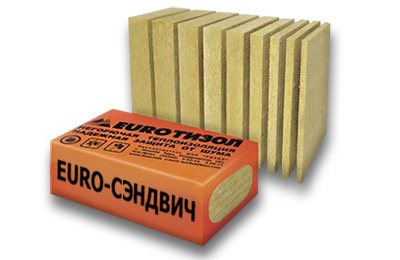

To learn more
Range of thermal insulation mineral boards
The range of offered options for mineral wool slabs of production and prices is wide enough and is able to meet most of the needs of domestic consumers.
Mineral slabs of the following articles of various thicknesses are presented:
- Plates EURO-LIGHT (Insulation LIGHT) - 25, 30, 35, 40, 50;
- Plates EURO-BLOK - 50-200, with a step of 10 mm;
- Plates EURO-VENT, different density - 40-200, with a step of 10 mm;
- Plates EURO-FASAD, high density - 40-200, with a step of 10 mm;
- Plates EURO-RUF, different density, different thicknesses;
- Plates EURO-LIT - 30, 40, 50, 60, 80;
- EURO-SANDWICH - 40-200, with a step of 10 mm;
The main advantages of basalt mineral slabs
Benefits and advantages of mineral slabs
Environmental Safety
The use of the material is absolutely safe for your health. All products are certified.
Fire-fighting properties
The use of EURO-LITE boards prevents the spread of flame along the structures, which minimizes your risks. The products belong to the group of non-combustible materials (NG). The melting temperature of the fibers is over + 1000 ° C.
Effective thermal insulation
High thermal insulation properties of products allow keeping warm in winter and cool in summer.
Form stability
Due to the low density and mixed orientation of the fibers, the boards do not settle in structures and retain their shape and volume throughout the entire service life.
Noise protection
Plates EURO-LIGHT have high sound insulating properties, significantly reduce the noise level and create comfortable conditions in the room.
Ease of installation
The material is easy to use, allowing you to install it yourself.

